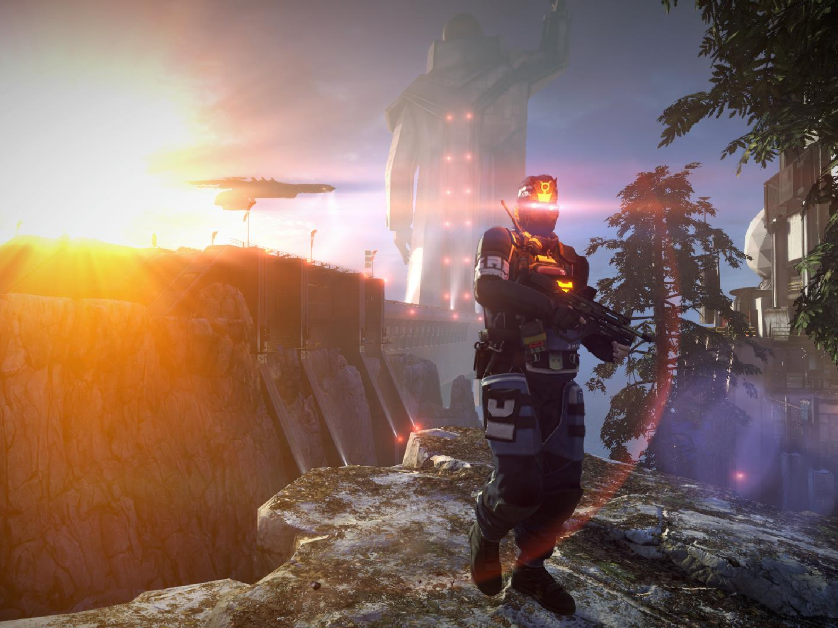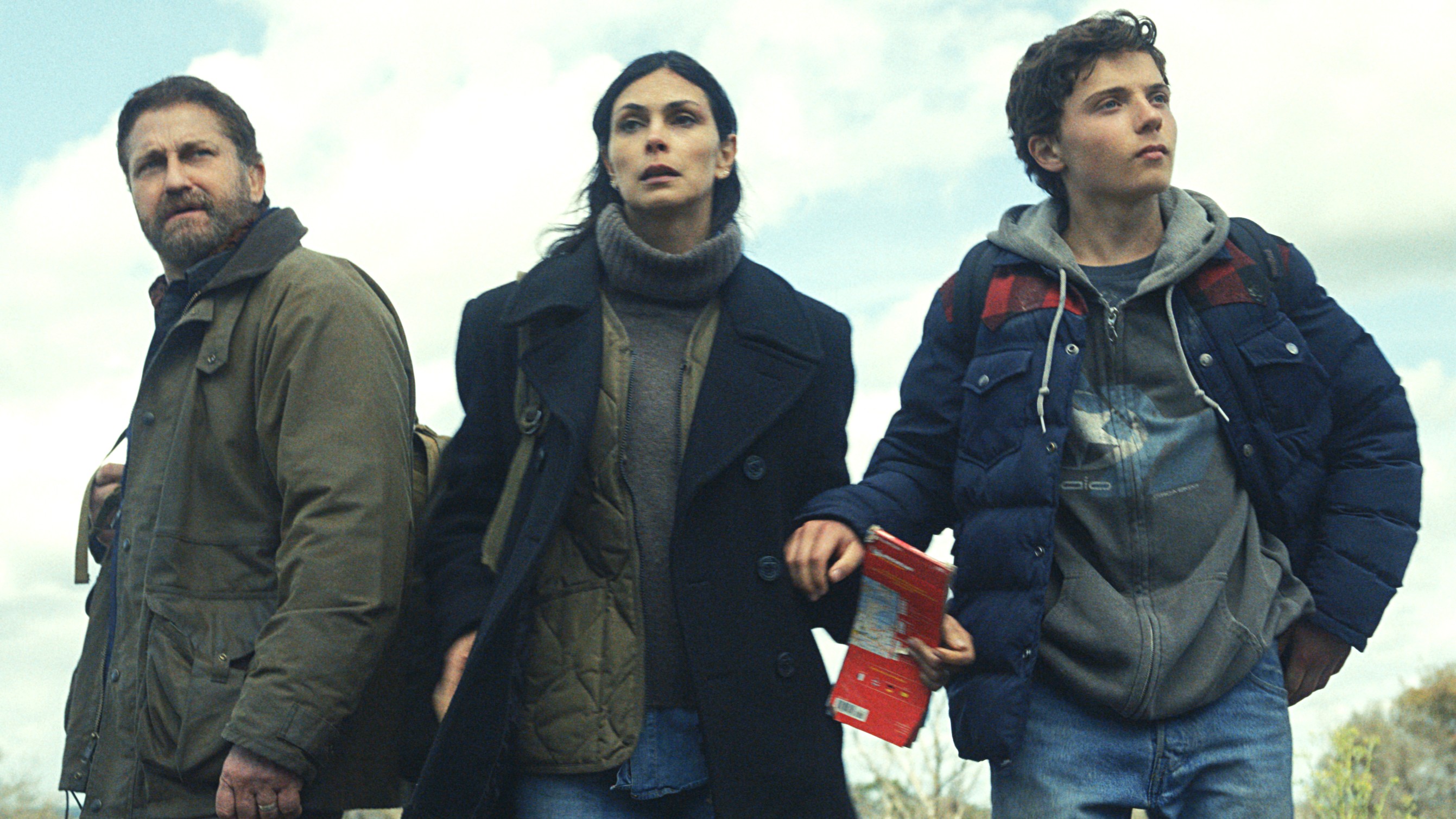Tom's Guide Verdict
"Shadow Fall" is a shiny, good-looking game that introduces some basic next-gen concepts, but ultimately lacks a strong sense of self.
Pros
- +
OWL invites unique gameplay with actual tactics
- +
Next-gen looks are what you hoped they’d be, even early on
- +
A capable shooter, it's an easy introduction into the PS4 with the whole controller used
Cons
- -
Disjointed story lacks identity, fails to drive gameplay
- -
Unrealistic shine to textures distracts from otherwise appealing graphics
- -
Formulaic missions without much variety
Why you can trust Tom's Guide
Gameplay and story
On Friday, (Nov. 15), the next generation of video games arrives, with the release of the PlayStation 4. In tow, Sony brings "Killzone: Shadow Fall," the next chapter in the long-running first-person shooter franchise that sets the player against the once-mighty Helghast Empire, in this game reduced to refugees forced to share a planet with the very people that destroyed life as they knew it. While "Shadow Fall" introduces some basic "Next Gen" concepts and certainly bears the sheen of a shiny, new console, ultimately it is a game without a strong sense of self.
Gameplay
For the most part, if you have played a first-person shooter in the last 10 years, you’ll have a pretty quick handle on the basic controls of "Shadow Fall." Developer Guerrilla Games made good use of the much-improved Dualshock 4 controller, with every button mapped for quick access to your tools of destruction. Most weapons come equipped with a secondary fire mode, increasing your carry load from two to a virtual four. Controls are tight, aiming feels visceral, and the weapons' power feels realistic. If you fire a charged shot from your converted rifle, the increased force will literally knock enemies over, often clear over a sheer cliff or off a building through a shattering window. Headshots kill, and a concentrated rifle burst will actually take an enemy down. On normal difficulty, that's important, because the amount of Helghast that will gather and try to flank you hits high levels rapidly.
MORE: Sony PS4 Review
The new game element, and something only possible on the PlayStation 4, thanks to the Dualshock 4's new touchpad, gives you control over the OWL Combat Drone. A flying drone device that can be deployed for various uses, the OWL is always with you, and is often the difference between narrowly escaping a large firefight with your life and being mercilessly gunned down. When deployed for combat, the OWL can be used to flank heavily armored enemies, or to distract groups while you time a well-placed grenade. A shock/flash-bang system temporarily jams weapons and blinds enemies allowing for a "breach" scenario even in an open field. A mobile cover system and an all-too-handy zip line that can be deployed virtually anywhere (as long as you have the high ground, of course), round out the OWL's capabilities.
Swiping in any of the four basic directions on the touchpad selects the function you want to use, and simply aiming the reticle and hitting L1 sends the OWL on its way. This makes the first- person shooter unique, with control of a virtual second player to allow for some advanced tactics. Unfortunately, there are times the OWL is a bit overpowering, almost allowing the player to just hide in cover while it takes care of business. While the level design early on encourages copious use of the zip line, as the game gets more linear, it has fewer opportunities for creative use and more guided moments.
Something should be said for a specific chapter of the game that flips a common shooter/adventure game convention on its head. Without spoiling the scenario, there comes a time when the player is put on the dreaded escort mission, a common video game scenario in which players must escort and protect a non-player character. The twist, however, is that the player character is the one being escorted – you have to rely upon your guide/sniper to get you to safety. It was a particular moment that stood out in the game as something that wasn’t just another "run to point A, shoot people, blow something up, run to point B, repeat" kind of mission.
Story
The story of "Killzone: Shadow Fall" starts with the end of a war. A handy recap video brings players up-to-speed, whether they’ve played every "Killzone" title, or this is their first go against the Helghast. Thirty years after the events of "Killzone 3," (released in 2011), Helghan has been destroyed. The remaining Helghast have been moved to the planet Vekta by the ISA, the protagonist ruling organization of the franchise, where they are meant to share the planet, and indeed even its capital city (Cold War Berlin-style) in an uncomfortable peaceful existence.
Get instant access to breaking news, the hottest reviews, great deals and helpful tips.
MORE: Top 10 PS4 Launch Titles
Of course, this is a first-person shooter, not a first-person tea party, so the uneasy peace doesn’t last long. Taking on the role of Lucas Kellan, players begin his life as a child, quickly spinning events into his recruitment into the Shadow Marshalls, an elite group of soldiers within the ISA. As all-out war threatens to erupt, it's up to Kellan and his ilk to stop the war and the Helghast threat before it can threaten all of Vekta.
The story moves into some morally ambiguous territory, and is at its best when dealing with those gray areas. The Helghast have clearly been wronged in some ways, and the question of whether they "brought it upon themselves," and whether the millions of civilians should be made to answer for the military industrial complex is an interesting and poignant one. The problem lies with this gray area being forced into the situation, then pushed aside on multiple occasions. They lost their planet, and are a troubled race struggling to survive – but then extremists within their ranks seek all-out war through terrorism; there are civilians who just want to live their lives that we’re meant to relate to, but then their own military mercilessly guns them down, and from the very start does not honor the treaty that is supposed to be the new basis of society.
If developer Guerrilla Games wanted a morally ambiguous game with a question of whether either side can ever be "right" or "wrong," then it shouldn’t have simultaneously spent so much time showing us how darn “evil” the Helghast are. A commitment one way or the other could have made the difference between a muddled mess where the player is forcefully pushed into the opinions of the writers and a nuanced social commentary where they are instead guided into making opinions of their own based solely on the unbiased facts presented.
While "Killzone: Shadow Fall" nearly had something to say about the nature of war and mankind’s greater struggles, it instead fell into basic propaganda and “twists” telegraphed from hours before they occurred. In an age where first-person shooters flood the market (especially each fall), a good story can make all the difference, and "Shadow Fall" just doesn’t quite fit the bill. That doesn’t mean it’s not enjoyable, but it certainly hurt any chances of greatness.
- 1
- 2
Current page: Killzone: Shadow Fall Review - PS4 Games - Tom's Guide
Next Page 'Killzone: Shadow Fall' Review: Next Gen Promise, Next Gen Problems - Tom's Guide
Tom's Guide upgrades your life by helping you decide what products to buy, finding the best deals and showing you how to get the most out of them and solving problems as they arise. Tom's Guide is here to help you accomplish your goals, find great products without the hassle, get the best deals, discover things others don’t want you to know and save time when problems arise. Visit the About Tom's Guide page for more information and to find out how we test products.
-
fulle I'm a tiny bit annoyed by this, and wonder if anyone else has noticed.... but, it seems most reviews I find for Killzone Shadow Fall, seem to have an extreme amount of emphasis on the campaign of the game, and only glance over the multiplayer. While COD Ghosts and Battlefield 4 reviews seem to be much more forgiving of the campaign's shortcomings (both of which are terrible), passing it off as "the multiplayer is good, so it's fine the campaign is bad".Reply
All over the place I've seen this, not just in this particular article. I think it's odd. And it's pretty darn annoying, since often all we get for a review of the Multiplayer portion of the game, is a friggen paragraph.
Overall, I rate this review a 4/10.

